14 巻, 1 号
選択された号の論文の7件中1~7を表示しています
- |<
- <
- 1
- >
- >|
活動報告
-
2009 年 14 巻 1 号 p. 1-11
発行日: 2009年
公開日: 2009/09/30
PDF形式でダウンロード (369K) -
2009 年 14 巻 1 号 p. 13-20
発行日: 2009年
公開日: 2009/09/30
PDF形式でダウンロード (293K)
第14回 日本薬剤疫学会学術総会記録
会長講演
-
2009 年 14 巻 1 号 p. 21-26
発行日: 2009年
公開日: 2009/09/30
PDF形式でダウンロード (464K)
特別講演1
-
2009 年 14 巻 1 号 p. 27-36
発行日: 2009年
公開日: 2009/09/30
PDF形式でダウンロード (1550K)
シンポジウム2 「医薬品評価と薬剤疫学 ~患者さんへ真に役立つ医薬品の提供を目指して~」
第一部 医薬品評価に資する情報
-
2009 年 14 巻 1 号 p. 37-45
発行日: 2009年
公開日: 2009/09/30
PDF形式でダウンロード (425K)
第二部 情報データベースとエビデンスの創製
-
2009 年 14 巻 1 号 p. 47-52
発行日: 2009年
公開日: 2009/09/30
PDF形式でダウンロード (259K) -
2009 年 14 巻 1 号 p. 53-59
発行日: 2009年
公開日: 2009/09/30
PDF形式でダウンロード (311K)
- |<
- <
- 1
- >
- >|
